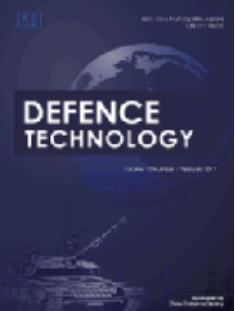研究了NiO和NiF2对碳化硼燃烧的影响
IF 5.9
Q1 ENGINEERING, MULTIDISCIPLINARY
引用次数: 0
摘要
硼基燃料以其高能量密度和在高能应用方面的潜力而受到认可,但面临点火延迟时间长和燃烧不完全等挑战,导致燃烧效率降低,限制了航空航天推进的性能。在本研究中,碳化硼(B4C)由于其良好的气相燃烧特性而被研究作为原始硼的替代燃料。选择金属氧化物(氧化镍(NiO))和金属氟化物(氟化镍(NiF2))作为氧化改性剂来提高B4C的反应活性。采用激光点火与光学诊断相结合的方法,研究了不同氧化剂对B4C点火和燃烧特性的增强作用。NiO和NiF2均能显著提高燃烧辐射强度,缩短B4C达到最大强度的时间。采用差示扫描量热法、原位x射线衍射法和傅里叶变换红外光谱法对B4C复合粉末进行了热分析。综合热分析表明,NiO和NiF2促进B4C燃烧的作用主要是通过形成NimBn和释放大量气体产物来实现的。我们有理由推测,B2O3/NimBn界面处的相分离为氧扩散和与B核反应提供了新的途径。B4C与NiO和NiF2的燃烧机理的不同在于气相产物,即CO2和BF3,从而导致它们的反应过程存在显著差异。本文章由计算机程序翻译,如有差异,请以英文原文为准。
Investigating the effect of NiO and NiF2 on boron carbide combustion
Boron-based fuels, recognized for their high energy density and potential in energetic applications, encounter challenges such as long ignition delays and incomplete combustion, which result in reduced combustion efficiency and limited performance in aerospace propulsion. In this study, boron carbide (B4C) is investigated as an alternative fuel to pristine boron due to its favorable gas-phase combustion. Both metal oxide (nickel oxide (NiO)) and metal fluoride (nickel fluoride (NiF2)) are selected as oxidizing modifiers to enhance the reactivity of B4C. A method combining laser ignition with optical diagnostics is employed to investigate the enhancing effects of different oxidizers on the ignition and combustion characteristics of B4C. Both NiO and NiF2 can significantly increase the combustion radiation intensity and reduce the time to maximum intensity of B4C. Differential scanning calorimetry, in-situ X-ray diffraction, and Fourier transform infrared spectroscopy were used for simultaneous thermal analysis of the B4C composite powders. Combined thermal analysis showed that the effects of NiO and NiF2 on promoting B4C combustion is mainly achieved via the formation of NimBn and the release of a large number of gas products. It is reasonable to speculate that the phase separation at the B2O3/NimBn interface forms new pathways for oxygen diffusion and reaction with the B core. The difference in the combustion mechanism of B4C with NiO and NiF2 lies in the gas phase products, i.e., CO2 and BF3, respectively, thus leading to significant differences in their reaction processes.
求助全文
通过发布文献求助,成功后即可免费获取论文全文。
去求助
来源期刊

Defence Technology(防务技术)
Mechanical Engineering, Control and Systems Engineering, Industrial and Manufacturing Engineering
CiteScore
8.70
自引率
0.00%
发文量
728
审稿时长
25 days
期刊介绍:
Defence Technology, a peer reviewed journal, is published monthly and aims to become the best international academic exchange platform for the research related to defence technology. It publishes original research papers having direct bearing on defence, with a balanced coverage on analytical, experimental, numerical simulation and applied investigations. It covers various disciplines of science, technology and engineering.
 求助内容:
求助内容: 应助结果提醒方式:
应助结果提醒方式:


